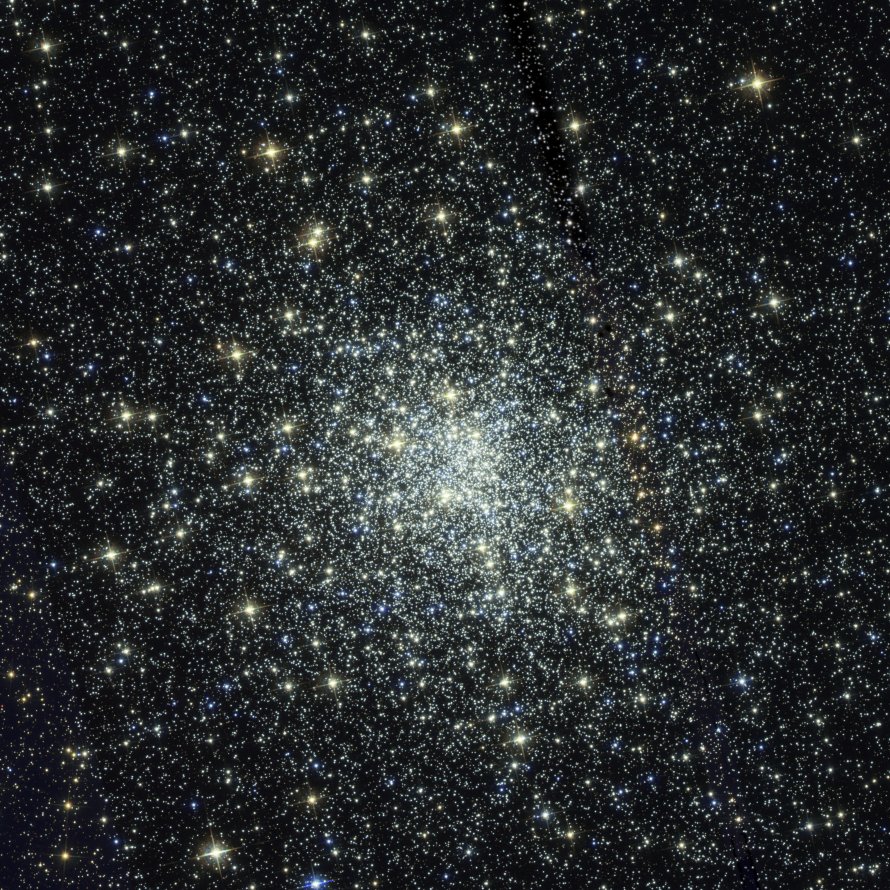M28 (NGC 6626)
Messier 28 (NGC 6626) is a globular cluster located in the constellation Sagittarius, in the Galactic Center of the Milky Way Galaxy in the Local Group of galaxies. M28 is 18000 light years away from Earth.
M28 is best viewed during late summer, is magnitude 7.7, and can be viewed with binoculars. M28 is 11' in apparent size. For reference, the full moon is 30'.
Observing difficulty: Intermediate
- Name:
- Type:
- globular cluster
- Constellation:
- Sagittarius
- NGC or IC:
- NGC 6626
- Magnitude:
- 7.7
- Viewing:
- binoculars
- Size:
- 11'
- Distance (light years):
- 18000 LY
- RA:
- 18h 24.5m
- Dec:
- -24 52'
- Season:
- late summer
- Milky Way location:
- Galactic Center
- Galaxy group:
- Local Group
- Messier Marathon #:
- 99
- Contains:
- 50,000 stars
* The naked eye can see up to magnitude ~7-8 objects under ideal dark sky conditions.
A Dense Stellar Jewel in Sagittarius
Deep in the constellation of Sagittarius lies Messier 28 (M28), a compact and rich globular cluster. Despite its less-known status compared to its nearby and brighter cousin, Messier 22, M28 remains a worthwhile object for detailed study and observation. This article delves into the discovery of M28, its physical characteristics, its apparent magnitude, and guides on how to locate and view this stellar assembly.
Discovery and Observation
Charles Messier first documented M28 in 1764, but its globular cluster nature was only determined in the early 20th century with the advent of more powerful telescopes. M28 resides approximately 18,000 light-years away in the dense star fields of the Milky Way, in a region full of observational gems.
Physical Characteristics and Magnitude
With an estimated age of about 12 billion years, M28 is a tightly bound sphere of hundreds of thousands of stars. It spans about 60 light-years across and houses numerous variable stars and millisecond pulsars. This globular cluster has an apparent magnitude of 7.66, making it a challenging target for naked-eye observations, but well within the reach of binoculars and small telescopes.
Astronomical Significance
M28 offers astronomers an opportunity to study an ancient stellar population and understand the early conditions of the universe. The discovery of millisecond pulsars within M28, extremely dense, rapidly rotating neutron stars, has also provided critical data on stellar evolution and end states.
Finding and Viewing M28
M28 is located in the teapot asterism of the Sagittarius constellation, a familiar sight in the summer skies of the Northern Hemisphere. To find M28, one can look for the bright star Lambda Sagittarii (the lid of the teapot) and move slightly towards the west. Under dark skies, binoculars reveal M28 as a faint, fuzzy star, while small to medium telescopes will start to resolve its granular appearance. However, due to its location in the Milky Way's dense star fields, separating it from the background stars can be a delightful challenge.



